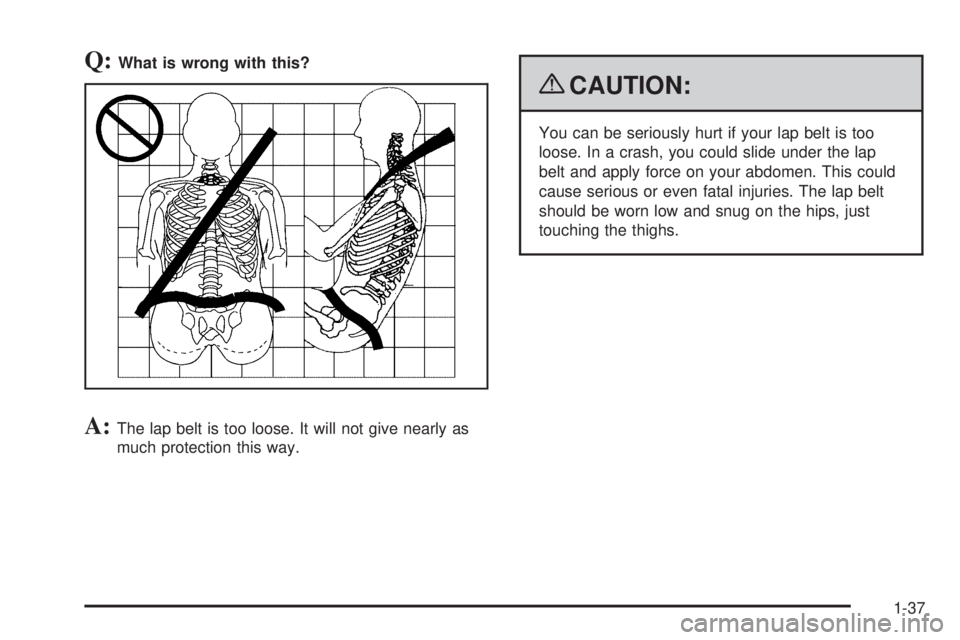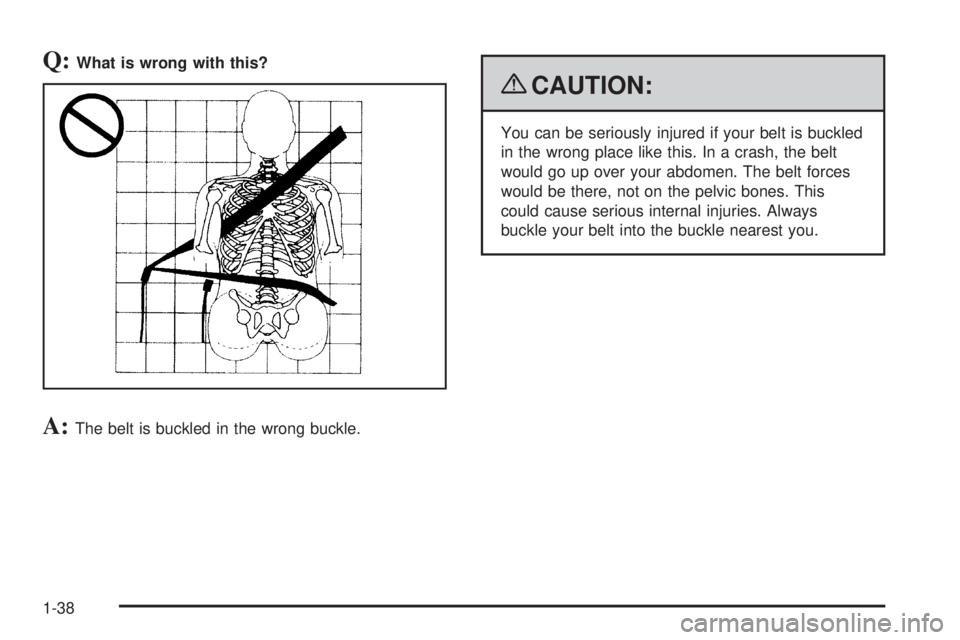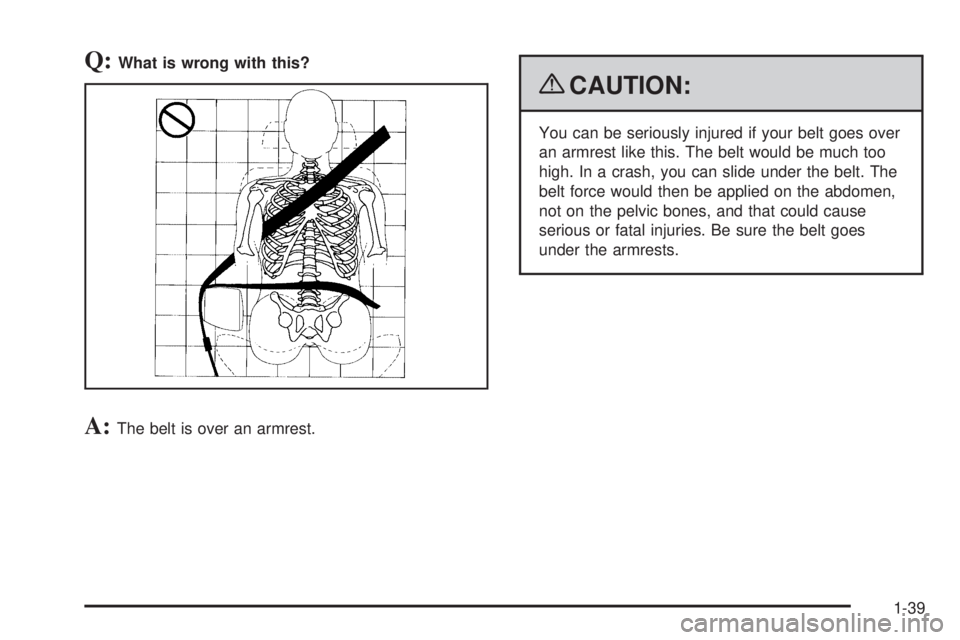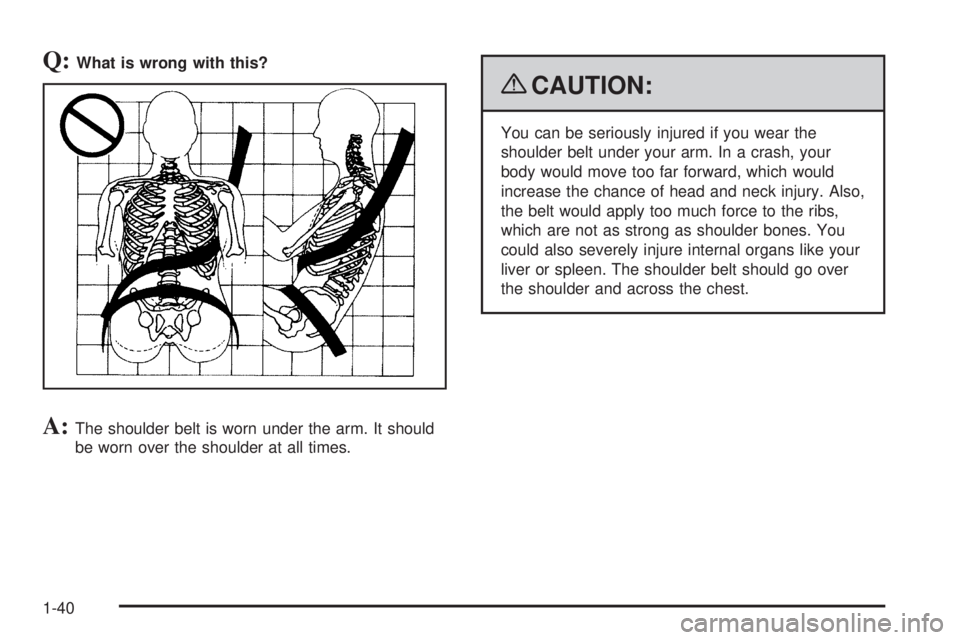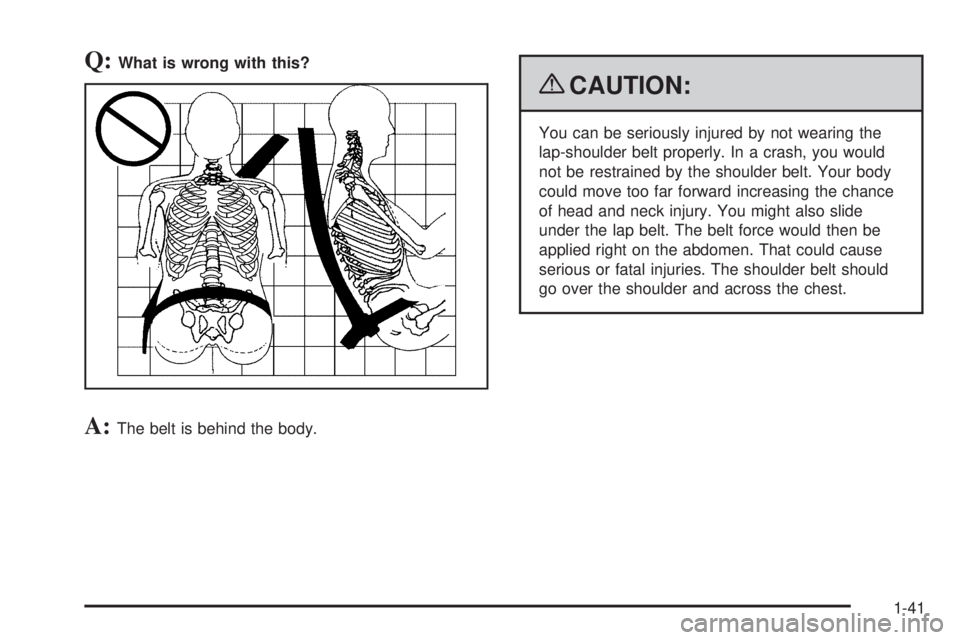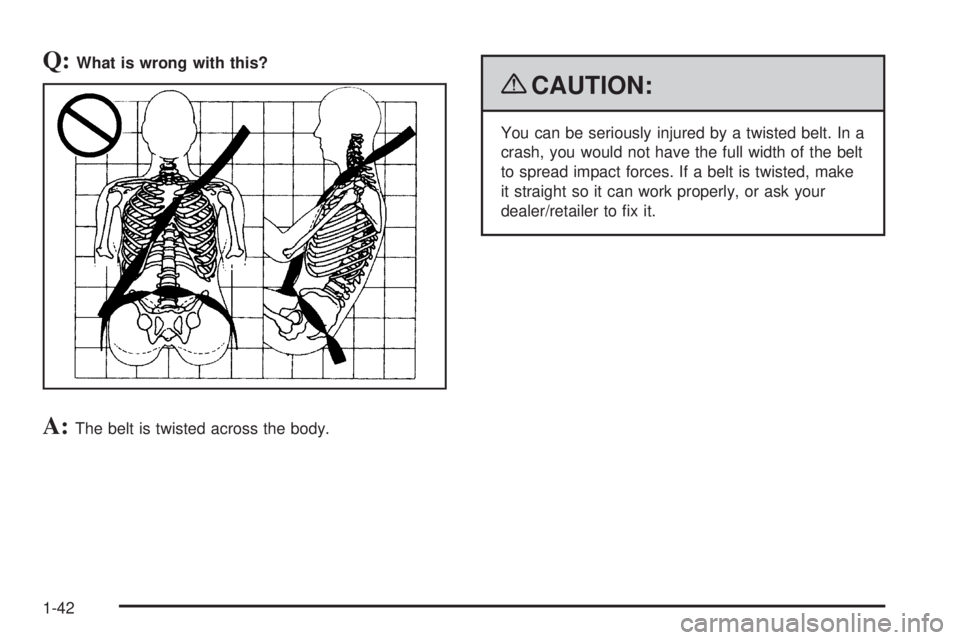CADILLAC ESCALADE ESV 2009 Service Manual
ESCALADE ESV 2009
CADILLAC
CADILLAC
https://www.carmanualsonline.info/img/23/58684/w960_58684-0.png
CADILLAC ESCALADE ESV 2009 Service Manual
Trending: fuel tank capacity, door lock, MPG, headlamp, fuel pump, reset, towing
Page 41 of 602
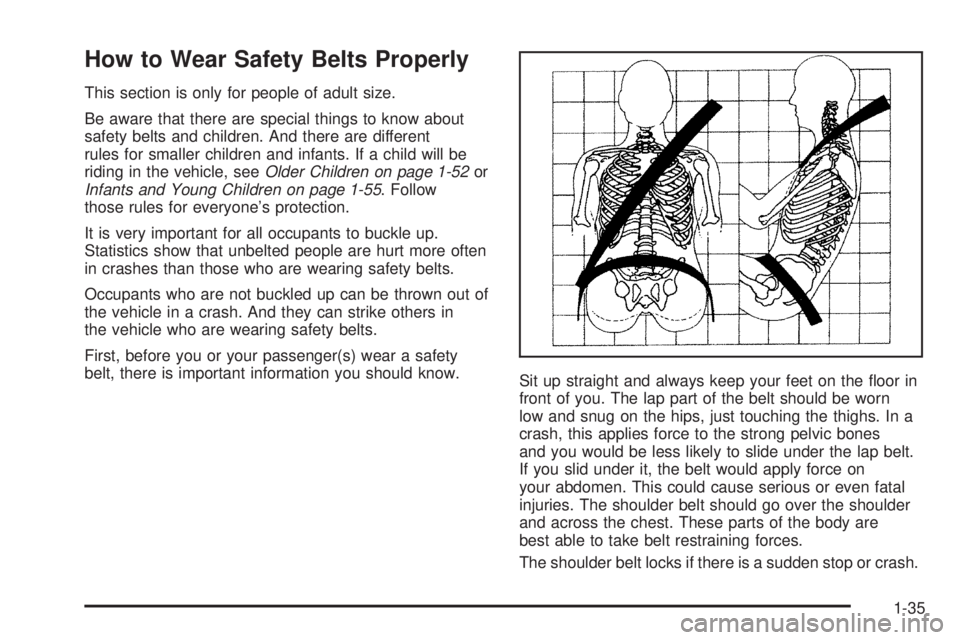
How to Wear Safety Belts Properly This section is only for people of adult size.
Be aware that there are special things to know about
safety belts and children. And there are different
rules for smaller children and infants. If a child will be
riding in the vehicle, see Older Children on page 1-52 or
Infants and Young Children on page 1-55 . Follow
those rules for everyone’s protection.
It is very important for all occupants to buckle up.
Statistics show that unbelted people are hurt more often
in crashes than those who are wearing safety belts.
Occupants who are not buckled up can be thrown out of
the vehicle in a crash. And they can strike others in
the vehicle who are wearing safety belts.
First, before you or your passenger(s) wear a safety
belt, there is important information you should know.
Sit up straight and always keep your feet on the �oor in
front of you. The lap part of the belt should be worn
low and snug on the hips, just touching the thighs. In a
crash, this applies force to the strong pelvic bones
and you would be less likely to slide under the lap belt.
If you slid under it, the belt would apply force on
your abdomen. This could cause serious or even fatal
injuries. The shoulder belt should go over the shoulder
and across the chest. These parts of the body are
best able to take belt restraining forces.
The shoulder belt locks if there is a sudden stop or crash.
1-35
Page 42 of 602
Q: What is wrong with this?
A: The shoulder belt is too loose. It will not give as
much protection this way. { CAUTION: You can be seriously hurt if your shoulder belt is
too loose. In a crash, you would move forward too
much, which could increase injury. The shoulder
belt should �t snugly against your body.
1-36
Page 43 of 602
Q: What is wrong with this?
A: The lap belt is too loose. It will not give nearly as
much protection this way. { CAUTION: You can be seriously hurt if your lap belt is too
loose. In a crash, you could slide under the lap
belt and apply force on your abdomen. This could
cause serious or even fatal injuries. The lap belt
should be worn low and snug on the hips, just
touching the thighs.
1-37
Page 44 of 602
Q: What is wrong with this?
A: The belt is buckled in the wrong buckle. { CAUTION: You can be seriously injured if your belt is buckled
in the wrong place like this. In a crash, the belt
would go up over your abdomen. The belt forces
would be there, not on the pelvic bones. This
could cause serious internal injuries. Always
buckle your belt into the buckle nearest you.
1-38
Page 45 of 602
Q: What is wrong with this?
A: The belt is over an armrest. { CAUTION: You can be seriously injured if your belt goes over
an armrest like this. The belt would be much too
high. In a crash, you can slide under the belt. The
belt force would then be applied on the abdomen,
not on the pelvic bones, and that could cause
serious or fatal injuries. Be sure the belt goes
under the armrests.
1-39
Page 46 of 602
Q: What is wrong with this?
A: The shoulder belt is worn under the arm. It should
be worn over the shoulder at all times. { CAUTION: You can be seriously injured if you wear the
shoulder belt under your arm. In a crash, your
body would move too far forward, which would
increase the chance of head and neck injury. Also,
the belt would apply too much force to the ribs,
which are not as strong as shoulder bones. You
could also severely injure internal organs like your
liver or spleen. The shoulder belt should go over
the shoulder and across the chest.
1-40
Page 47 of 602
Q: What is wrong with this?
A: The belt is behind the body. { CAUTION: You can be seriously injured by not wearing the
lap-shoulder belt properly. In a crash, you would
not be restrained by the shoulder belt. Your body
could move too far forward increasing the chance
of head and neck injury. You might also slide
under the lap belt. The belt force would then be
applied right on the abdomen. That could cause
serious or fatal injuries. The shoulder belt should
go over the shoulder and across the chest.
1-41
Page 48 of 602
Q: What is wrong with this?
A: The belt is twisted across the body. { CAUTION: You can be seriously injured by a twisted belt. In a
crash, you would not have the full width of the belt
to spread impact forces. If a belt is twisted, make
it straight so it can work properly, or ask your
dealer/retailer to �x it.
1-42
Page 49 of 602

Lap-Shoulder Belt All seating positions in the vehicle have a lap-shoulder
belt except for the center front passenger position, if
equipped, which has a lap belt. See Lap Belt on
page 1-50 for more information.
The lap-shoulder belts for the �rst and second row
seating positions are equipped with free-falling latch
plates. If the vehicle has a third row, the lap-shoulder
belts have either free-falling or cinching latch plates.
Use the following pictures to determine the latch
plate style:
The following instructions explain how to wear a
lap-shoulder belt properly.
1. Adjust the seat, if the seat is adjustable, so you can
sit up straight. To see how, see “Seats” in the Index.
2. Pick up the latch plate and pull the belt across you.
Do not let it get twisted.
The lap-shoulder belt may lock if you pull the belt
across you very quickly. If this happens, let the belt
go back slightly to unlock it. Then pull the belt across
you more slowly.
If the shoulder portion of a passenger belt with a
free-falling latch plate is pulled out all the way, the
child restraint locking feature may be engaged.
If this happens, let the belt go back all the way and
start again.Free-Falling Latch Plate Cinching Latch Plate
1-43
Page 50 of 602
Engaging the child restraint locking feature in the
right front seating position may affect the passenger
sensing system. See Passenger Sensing System
on page 1-87 for more information.
If the belt stops before it reaches the buckle, for
lap-shoulder belts with cinching latch plates, tilt the
latch plate and keep pulling the safety belt until
it can be buckled. 3. Push the latch plate into the buckle until it clicks.
If you �nd that the latch plate will not go fully into the
buckle, see if you are using the correct buckle.
Pull up on the latch plate to make sure it is secure.
If the belt is not long enough, see Safety Belt
Extender on page 1-51 .
Position the release button on the buckle so that the
safety belt could be quickly unbuckled if necessary.
4. If equipped with a shoulder belt height adjuster,
move it to the height that is right for you. See
“Shoulder Belt Height Adjustment” later in this
section for instructions on use and important safety
information.
1-44
Trending: air suspension, instrument cluster, glove box, weight, night vision, clock reset, brake pads replacement


